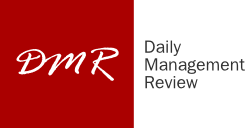
In a mounting legal confrontation that has drawn attention across India’s digital and political landscape, the government’s expanding internet censorship regime is facing direct challenge from a major global social media platform. At the heart of the dispute is a sweeping legal framework introduced over the last two years that has empowered thousands of officials to unilaterally order the removal of online content deemed illegal or offensive.
A lawsuit filed in the Karnataka High Court has brought this issue into sharp focus, with the platform challenging the government’s legal basis for its growing powers and accusing authorities of undermining freedom of expression under the guise of digital regulation. The outcome of this case may define the limits of state control over the internet in India for years to come.
Centralised System Amplifies Takedown Powers
Until recently, only select ministries in the Indian government—primarily Information Technology and Information & Broadcasting—had the authority to order content removal. Their powers were limited to specific situations involving national security, public order, foreign relations, and incitement. Final decisions required ministerial-level approvals, and fewer than 100 officials nationwide had clearance to initiate such action.
This changed in 2023, when the government authorized all central and state departments, including police forces, to issue takedown notices for any content considered unlawful under Indian law. The new policy allowed direct communication between local authorities and digital platforms, bypassing earlier checks and significantly expanding the pool of people who could initiate censorship.
The shift was formalised in October 2024 with the launch of a dedicated online portal named Sahyog, meaning “collaboration.” This platform enabled approved government officials to submit takedown requests swiftly and in bulk. The stated aim was to ensure more "effective" and timely removal of harmful or illegal content. However, critics allege that Sahyog functions as a backdoor censorship system, operating with little transparency and no judicial oversight.
Despite strong pressure from the government, one prominent social media platform refused to join the portal. Instead, it filed a case arguing that the mechanism was unconstitutional and violated fundamental rights. The legal complaint describes the platform’s refusal to participate in what it refers to as a “censorship portal,” which it claims enables politically motivated takedowns of satire, criticism, and journalistic content.
Takedown Orders: From Satire to News Reports
Court documents show that between March 2024 and June 2025, Indian officials issued more than 1,400 removal orders targeting posts, videos, accounts, and images. The vast majority came from a cybercrime agency within the Home Ministry, which was also responsible for developing the Sahyog platform.
While many takedowns were based on genuine concerns such as hate speech, misinformation, and illegal material, others appeared to focus on content that criticised political leaders or questioned official narratives. For instance, officials demanded the removal of cartoons depicting economic issues like inflation, mocking senior politicians using visual satire. Other orders targeted jokes, memes, or comments made about state leaders or central ministers.
In some cases, even members of the ruling party were not spared. A post that humorously portrayed a rival political figure in an astronaut suit was flagged by police as a potential national security threat. Another removal request cited risks to communal harmony from a post calling a senior leader “useless.”
The censorship extended to news coverage as well. Official takedown orders were issued against reports related to a deadly stampede at a major railway station in New Delhi, despite the news being factually reported and publicly available. Some of these media posts remain online, but the intention behind the censorship effort has raised red flags among free speech advocates.
The platform’s legal team has argued in court that such orders reflect a pattern of abuse of authority and a deliberate attempt to suppress information that may politically embarrass the government.
Tech Sector and Free Speech in Tension
This legal battle comes at a time when India is positioning itself as a global technology hub and digital economy leader. The same social media platform locked in this legal dispute is also eyeing major investments in electric vehicles and satellite-based internet services in India. Publicly, political leaders have courted these ventures, inviting further expansion and collaboration.
Yet, behind closed doors, tensions are escalating. As companies navigate India’s increasingly strict compliance environment, they face growing risks—non-compliance with takedown orders can lead to loss of legal protection for user-generated content, potentially making the platforms criminally liable for posts shared by individuals.
The government maintains that the revised policy and Sahyog portal are vital tools to control harmful digital content and maintain public safety. Officials have stated that the new model simply operationalises existing laws and that platforms must respect India’s legal framework. At the same time, some police officials have voiced frustration at what they see as resistance from platforms unwilling to comply quickly with censorship orders.
The debate is now polarising political and legal discourse in India. On one hand, supporters of the policy argue that unregulated social media has contributed to law-and-order problems, incited violence, and spread communal hatred. On the other hand, civil society voices warn that the mechanisms being used are opaque, excessively broad, and subject to political misuse.
Legal experts argue that the executive branch should not have unchecked power to determine the legality of content. They call for the establishment of independent oversight or judicial review to prevent arbitrary decisions and protect democratic values.
As the Karnataka High Court continues to deliberate on the case, the judgment is likely to influence how future online censorship policies are framed. It could determine whether platforms retain the ability to resist politically charged takedown requests or whether government officials will continue to wield wide-ranging control over digital speech.
(Source:www.communicationstoday.co.in)
A lawsuit filed in the Karnataka High Court has brought this issue into sharp focus, with the platform challenging the government’s legal basis for its growing powers and accusing authorities of undermining freedom of expression under the guise of digital regulation. The outcome of this case may define the limits of state control over the internet in India for years to come.
Centralised System Amplifies Takedown Powers
Until recently, only select ministries in the Indian government—primarily Information Technology and Information & Broadcasting—had the authority to order content removal. Their powers were limited to specific situations involving national security, public order, foreign relations, and incitement. Final decisions required ministerial-level approvals, and fewer than 100 officials nationwide had clearance to initiate such action.
This changed in 2023, when the government authorized all central and state departments, including police forces, to issue takedown notices for any content considered unlawful under Indian law. The new policy allowed direct communication between local authorities and digital platforms, bypassing earlier checks and significantly expanding the pool of people who could initiate censorship.
The shift was formalised in October 2024 with the launch of a dedicated online portal named Sahyog, meaning “collaboration.” This platform enabled approved government officials to submit takedown requests swiftly and in bulk. The stated aim was to ensure more "effective" and timely removal of harmful or illegal content. However, critics allege that Sahyog functions as a backdoor censorship system, operating with little transparency and no judicial oversight.
Despite strong pressure from the government, one prominent social media platform refused to join the portal. Instead, it filed a case arguing that the mechanism was unconstitutional and violated fundamental rights. The legal complaint describes the platform’s refusal to participate in what it refers to as a “censorship portal,” which it claims enables politically motivated takedowns of satire, criticism, and journalistic content.
Takedown Orders: From Satire to News Reports
Court documents show that between March 2024 and June 2025, Indian officials issued more than 1,400 removal orders targeting posts, videos, accounts, and images. The vast majority came from a cybercrime agency within the Home Ministry, which was also responsible for developing the Sahyog platform.
While many takedowns were based on genuine concerns such as hate speech, misinformation, and illegal material, others appeared to focus on content that criticised political leaders or questioned official narratives. For instance, officials demanded the removal of cartoons depicting economic issues like inflation, mocking senior politicians using visual satire. Other orders targeted jokes, memes, or comments made about state leaders or central ministers.
In some cases, even members of the ruling party were not spared. A post that humorously portrayed a rival political figure in an astronaut suit was flagged by police as a potential national security threat. Another removal request cited risks to communal harmony from a post calling a senior leader “useless.”
The censorship extended to news coverage as well. Official takedown orders were issued against reports related to a deadly stampede at a major railway station in New Delhi, despite the news being factually reported and publicly available. Some of these media posts remain online, but the intention behind the censorship effort has raised red flags among free speech advocates.
The platform’s legal team has argued in court that such orders reflect a pattern of abuse of authority and a deliberate attempt to suppress information that may politically embarrass the government.
Tech Sector and Free Speech in Tension
This legal battle comes at a time when India is positioning itself as a global technology hub and digital economy leader. The same social media platform locked in this legal dispute is also eyeing major investments in electric vehicles and satellite-based internet services in India. Publicly, political leaders have courted these ventures, inviting further expansion and collaboration.
Yet, behind closed doors, tensions are escalating. As companies navigate India’s increasingly strict compliance environment, they face growing risks—non-compliance with takedown orders can lead to loss of legal protection for user-generated content, potentially making the platforms criminally liable for posts shared by individuals.
The government maintains that the revised policy and Sahyog portal are vital tools to control harmful digital content and maintain public safety. Officials have stated that the new model simply operationalises existing laws and that platforms must respect India’s legal framework. At the same time, some police officials have voiced frustration at what they see as resistance from platforms unwilling to comply quickly with censorship orders.
The debate is now polarising political and legal discourse in India. On one hand, supporters of the policy argue that unregulated social media has contributed to law-and-order problems, incited violence, and spread communal hatred. On the other hand, civil society voices warn that the mechanisms being used are opaque, excessively broad, and subject to political misuse.
Legal experts argue that the executive branch should not have unchecked power to determine the legality of content. They call for the establishment of independent oversight or judicial review to prevent arbitrary decisions and protect democratic values.
As the Karnataka High Court continues to deliberate on the case, the judgment is likely to influence how future online censorship policies are framed. It could determine whether platforms retain the ability to resist politically charged takedown requests or whether government officials will continue to wield wide-ranging control over digital speech.
(Source:www.communicationstoday.co.in)





